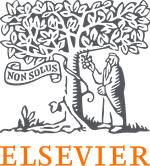La Materia y lo Imaginario o de la Danza de Maya en el Vacío
Keywords:
Imaginarios, métodos de trabajo.Abstract
El artículo aborda el problema de la investigación sobre lo imaginario cuando se parte de la base de una investigación sobre el universo material. Se traza un panorama de la evolución del concepto de materia en la filosofía y ciencia de occidente, hasta llegar a las concepciones modernas basadas en los descubrimientos de la física contemporánea, se exploran las implicaciones filosóficas de la interpretación de Copenhague, frente a las interpretaciones deterministas de la física de partículas y la posibilidad de niveles de existencia de la materia que poseerían propiedades contra-intuitivas. Se relacionan estas especulaciones con la investigación sobre imaginarios partiendo de una discusión del concepto de magma en Castoriadis, alineándolo al de inconsciente en Jung y de realidad en Lacan. Se explora el concepto de lattice desarrollado por Grinberg, como un puente posible entre la investigación física y la psicológica.Downloads
References
Aspect, A. (2005). “The Bohr-Einstein Debate And Quantum Entanglement Tested Experimentally”. En: Hyperlink "Http://Www2.Cnrs.Fr/Sites/Communique/Fichier/Bohr_Eisntein_En.Pdf "Http://Www2.Cnrs.Fr/Sites/Communique/Fichier/Bohr_Eisntein_En.Pdf (1 De Febrero De 2015)
Bohm, D. (1988A). La totalidad y el orden implicado. Barcelona: Kairós.
Bohm, D. (1999). “El cosmos, la materia, la vida y la conciencia”. En: Lorimer, David (Ed.). El espíritu de la ciencia. Barcelona: Kairós.
Bohm, D. y Peat, D. (1988B). “Ciencia, Orden Y Creatividad. Las Raíces Creativas De La Ciencia Y La Vida”. Barcelona: Kairós.
Bohm, D. y Peat, D. (1988B). Ciencia, orden y creatividad. Las raíces creativas de la ciencia y la vida. Barcelona: Kairós.
Bohm, D. y Vigier, J.P. (1954). “Model Of The Causal Interpretation Of Quantum Theory In Terms Of A Fluid With Irregular Fluctuations”. Phys. Rev. Vol. 96, N° 1, pp. 208–216.
Carr, B. Ed. (2007). Universe Or Multiverse?. Cambridge: Cambridge Univ. Press.
Castoriadis, C. (1975). La Institución Imaginaria de la sociedad. Barcelona: Tusquets Editores, Colección Acracia. Costa De Beauregard, O. (1947). “Le Principe De Relativité Et La Spatialisation Du Temps”.En: Revue des Questions Scientifiques Bruselas: Société Scientifique De Bruxelles, pp. 38-65.
Dewitt, B. y Graham, N. Eds. (1973). The Many-Worlds Interpretation of Quantum Mechanics. Princeton: Princeton Series In Physics. Everett, H. (1956, 1973). “Theory Of The Universal Wavefunction”. Tesis, Princeton University. En: Http://Www Tc.Pbs.Org/Wgbh/Nova/Manyworlds/Pdf/Dissertation.PdfFeynman, R. P. (1949A). “The Theory Of Positrons”. Physical Review 76, 749–759._
Feynman, R. P. (1949B). “Space-Time Approach To Quantum Electrodynamics”. Physical Review, N° 76, pp. 769–789.
Frey-Rohn, L. (1991). De Freud A Jung. México: Fce.
Grinberg, J. (1979). El Cerebro Consciente. México: Trillas.
Hameroff, S. Watt, R.C. (1982). “Information Processing In Microtubules”. Journal of Theoretical Biology. N° 98, pp. 549- 561.
Jauch, Josef M.; Rohrlich, Fritz (1955). The Theory of Photons and Electrons. Cambridge, Mass.: Addison-wesley.
Hameroff, S. y Penrose, R. (1996). “Orchestrated Reduction Of Quantum Coherence In Brain Microtubules, A Model For Consciousness”. En: Hamerroff, Stephen, Y Otros. Toward Science Of Consciousness: Contributions From The 1994 Tucson Conference. Massachusetts: Mit Press.
Hawking, S. W. y Ellis, George F. R. (1973): The Large Scale Structure of Space-Time. Cambridge: Cambridge University Press.
Hooft, G. (1995). Diagrammatica. The Path To Feynman Rules. Cambridge: CambridgeUniversity Press.
Hooft, G., Veltman, M.(1973). Diagrammar. Cern Preprint.
Jauch, J. M. y Rohrlich, F. (1955). The Theory Of Photons And Electrons. Cambridge, Mass: Addison-Wesley.
Kaku, M. (2005): Universos Paralelos. Madrid: Atalanta.
Kuhn, T. (1971). La estructura de las revoluciones científicas. México: Fondo de Cultura Económica
Lacan, J. (1988). Escritos I. México: Siglo XXI Editores.
Lacan, J. (1999). Escritos II. Siglo XXI. México: Editores S.A De C.V.
Lacan, J. (2006). El Seminario De Jacques Lacan. Libro 1: Los Escritos Técnicos De Freud, 1953-1954. Buenos Aires: Paidós.
TOrtoli- P. (1997). El cántico de la cuántica. Barcelona: Gedisa.
Penrose, R. (2006). Lo grande, lo pequeño y la mente humana. Madrid: Akal.
Talbot, M. (1995). Más allá de la teoría cuántica. Barcelona: Gedisa.
Tegmark, M. (2003). Parallel Universes. New York: Scientific American.
Tegmark, M. (2014). Our mathematical universe: my quest for the ultimate nature of reality. New York: Knopf Doubleday Publishing Group
Vigier, J.-P. (1954). Recherches Sur l'interprétation Causale de la Théorie des Quanta. Tesis De Estado. París: Université De Paris, Faculté Des Sciences.
Weinberg, S. (2005). "Living In The Multiverse". En: Hyperlink "Http://Arxiv.Org/Abs/Hep-Th/0511037V1" Http://Arxiv.Org/Abs/HepTh/0511037V1 (1 De Feb. De 15).
Zizek, S. (2010). Cómo Leer a Lacan. Buenos Aires: Paidós.
Downloads
Published
How to Cite
Issue
Section
License
Copyright (c) 2017 CONTEXTO. Revista de la Facultad de Arquitectura de la Universidad Autónoma de Nuevo León

This work is licensed under a Creative Commons Attribution-NonCommercial 4.0 International License.
The authors who publish in this journal accept the following conditions:
1. The authors keep the copyright and give the journal the right of the first publication, with their content registered under the Creative Commons License, which lets third parties to use the published material as long as they mention the authors and the first publication from the journal.
2. The authors can make other independent and additional contractual agreements for the non-exclusive distribution of the version of the article published in the journal (for example an institutional repository or a book) provided that they explicitly mention that the content was first published in CONTEXTO. Revista de la Facultad de Arquitectura de la Universidad Autónoma de Nuevo León..










.png)





